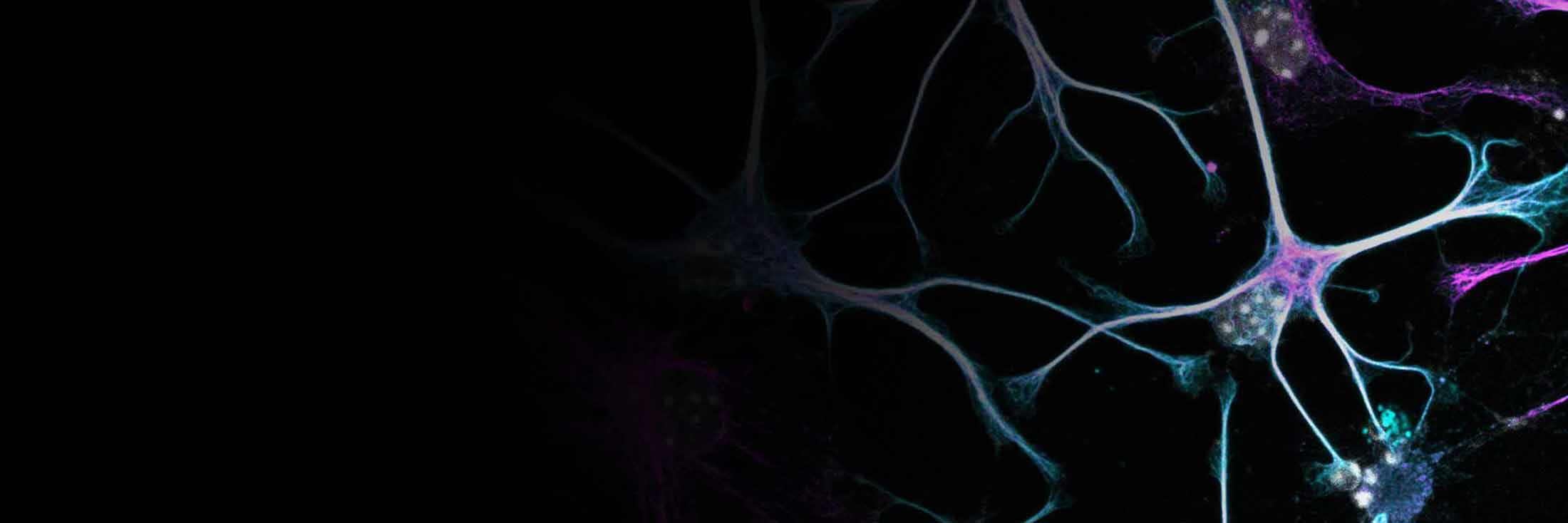
Correlative Multimodal Imaging (CMI) Pipelines
Problem:
No single imaging technology can provide holistic information about a given sample. This limitation can be overcome by combining multiple imaging technologies, which gathers information about the specimen with two or more complementary modalities that – sequentially combined – create a composite view of the sample.

Solution:
Correlated multimodal imaging (CMI) helps to bridge the gap between biological and pre-clinical imaging.
One important aim of multimodal imaging is to span all relevant resolution ranges from molecules to organisms for the biomedical question of interest. Integrative approaches and multiscale imaging can provide a mechanistic understanding of diseases and organisms by adding structural information about relevant molecular machines and molecules, and by deciphering underlying molecular mechanisms.
Our showcase studies.
2
modalities
µMRI + HREM
High-throughput phenotyping of murine embryos
Rapid and precise phenotyping analysis of large numbers of wild-type and mutant mouse embryos is essential for characterizing the genetic and epigenetic factors regulating embryogenesis. The combination of high-throughput µMRI with HREM provides an alternative screening pipeline with advantages over existing 3D phenotype screening methods as well as traditional histology. We highly recommend the µMRI-HREM phenotype analysis pipeline as a routine tool for analysing the phenotype of transgenic and mutant embryos.
Source (PubMed): Pieles et al., Journal of Anatomy, 2007 [17532797]

Image: 3D volume HREM rendering of a mouse embryo. Source: DMM, 2014 Oct.
2
modalities
MALDI MS + µXRF
Lipid distribution in the bone
We examined specific lipid distributions in skin, cartilage, muscle, nail, and the intact morphology of bone by calcium and phosphorus imaging. A combination of molecular and elemental imaging was achieved, providing now for the first time the possibility of gathering MALDI MSI and μXRF information from the very same sample without any washing steps omitting therefore the analytical artifacts that inevitably occur in approaches using consecutive tissue sections. The proposed combination can benefit in research studies regarding bone diseases, osteoporosis, osteoarthritis, cartilage failure, bone/tendon distinguishing, where elemental and lipid interaction play an essential role.
Source (PubMed): Svirkova et al., Analyst, 2018 [29737333]

Images show the distribution of Ca, P, and ROI data obtained from sample fixed to a glass slide with double-sided tape.
2
modalities
PAT + OCT
In vivo human skin structure and vasculature imaging
Cutaneous blood flow accounts for approximately 5% of cardiac output in human and plays a key role in a number of a physiological and pathological processes. We show for the first time a multi-modal photoacoustic tomography (PAT), optical coherence tomography (OCT) and OCT angiography system with an articulated probe to extract human cutaneous vasculature in vivo in various skin regions. OCT angiography supplements the microvasculature which PAT alone is unable to provide. This multimodal system is a valuable tool for comprehensive non-invasive human skin vasculature and morphology imaging in vivo.
Source (PubMed): Liu et al., Biomedical Optics Express, 2016 [27699106]

Image: (A) OCT morphologic volume showing the skin creases. The inlet is a photo of the knee imaged with the dashed square indicating approximately the scanned region. (B) A slice in the dermal-epidermal junction giving PAT in green and OCT angiography in red. Source: Biomedical Optics Express.
3
modalities
µMRI + µCT + HREM
Multiscale murine tumore vasculature
Tumour vasculature plays a major role for tumour progression and dissemination, highlighting the importance of vascular visualisation. The application of CMI pipelines allowed the acquisition of a comprehensive set of vascular parameters for a single tumor. The workflow visualizes capillaries at different length scales, puts them into the context of the overall tumor vessel network and allows quantification and comparison of vessel densities and morphologies by different modalities. The workflow adds information about hypoxia and blood flow rates.
Source (PubMed): Zopf et al., Molecular Imaging and Biology, 2021[34101107]

Image: Co-registration of the vasculature as segmented based on microMRI, microCT, and HREM datasets.
4
modalities
µCT + AFM + SEM + XRF
Cross-modality imaging of murine jawbones
Bisphosphonates (BIS) have many positive systemic effects in patients suffering from rheumatologic disorders, but a severe local side effect: “BIS-related osteo-necrosis of the jaw” (BRONJ) can develop after invasive dental procedures in patients receiving chronic BIS therapy. The exact pathomechanism of BRONJ is not known, but alleviation of tissue regeneration processes may prevent development of BRONJ. Low level light therapy and shock therapy are promising clinical approaches. Here we intend to elaborate the therapeutic potential of these physical approaches in BRONJ with emphasis on the pathomechanism.
Source (PubMed): Reier et al., Analyst, 2021 [27699106]

Image: Synopsis of the CMI workflow to visualize multiparametric jawbone features for the clinically relevant murine model.
4
modalities
µMRI + OCT/PAT + µCT + HREM
Blood vessel tracking
Spatial information on vascular anatomy is a prerequisite for answering key questions in a variety of life-science disciplines. Analysis of vascular structures, tracking of oxygen and drug transport, changes in wall stress and similar investigations all rely on a precise 3D description of vascularization. Retrieval of the precise anatomy from a 3D digital image, i.e. image segmentation, is a task known to be time demanding, errorprone and unintuitive for humans. The aim of this project is a vessel tracking algorithm, that can be applied for segmentation in various vascularization environments, across a wide range of spatial scales, and a broad diversity of modalities.

6
modalities
µMRI + OCT/PAI + µCT + HREM + HISTO + MSI
Angiogenesis in tumors
Cancer is the second leading cause of mortality in Europe. Activating angiogenesis, the sprouting of new blood vessels from the existing vasculature, is one of the hallmarks of cancer and facilitates rapid tumor growth and metastasis. Thus, inhibiting tumor neoangiogenesis is a strategy for cancer treatment currently being pursued. Current anti-angiogenic therapies are only based on the inhibition of tyrosine kinase receptors (RTK). We aim to study how RTK inhibitors affect the structure and function of tumor vessels and their microenvironment, and to identify new blockers that can potentiate the anti-cancer effects of current anti-angiogenic therapies.

Image: MRI (15.2 T) of a subcutaneous mouse tumor & blood vessel network of isolated tumor
7
modalities
PET + µMRI + µCT + HISTO + Confocal + MSI + XRF
Micro-calcifications in aortae
The detection of sites of vascular calcification in the blood system may be used as an early prognostic marker for cardiovascular diseases. Typically, these calcifications are quantified in patients using CT. Recently ex-vivo experiments showed that the PET-tracer 18F-NaF is able to bind selectively to micro-nodules of pathological calcification. In contrast to the glucose analogue 18F-FDG, this binding occurs at high image contrast and is highly specific for sites of calcification. In the pilot project, we aim to investigate if small-animal PET with 18F-NaF is able to detect vascular calcification in the thoracic aorta of male Sprague-dawley rats. Artery calcification will be induced by feeding rats with a low-protein/highadenine diet. Baseline 18F-NaF-PET and sequential MRI/PET scans will be performed after the 3 week-diet period. After final imaging, animals will be euthanized and thoracic aortas will be removed for further analysis.

Image: Multimodal imaging to quantify calcification of blood aortae.

